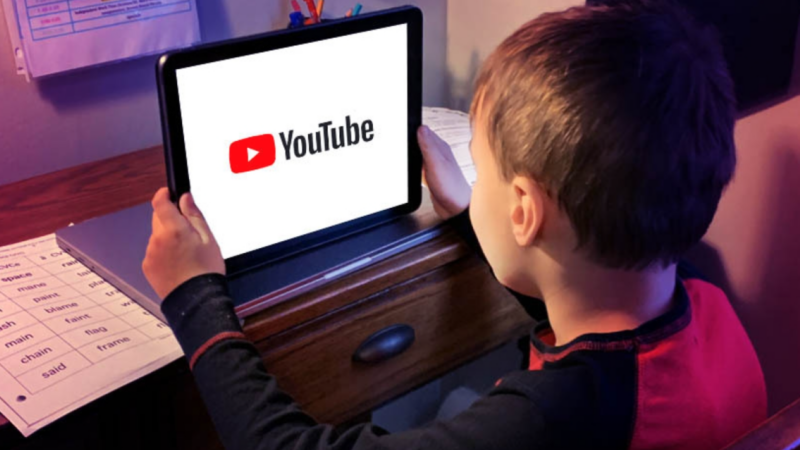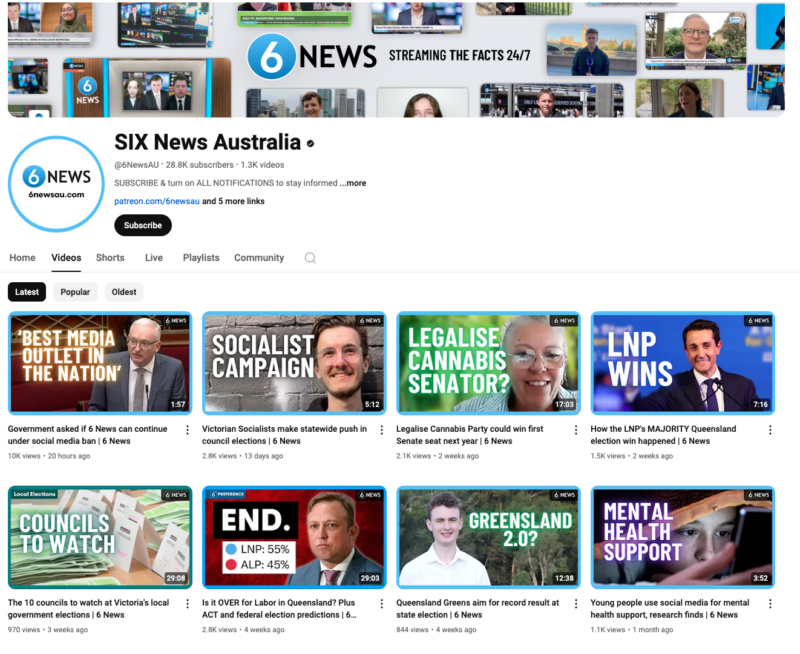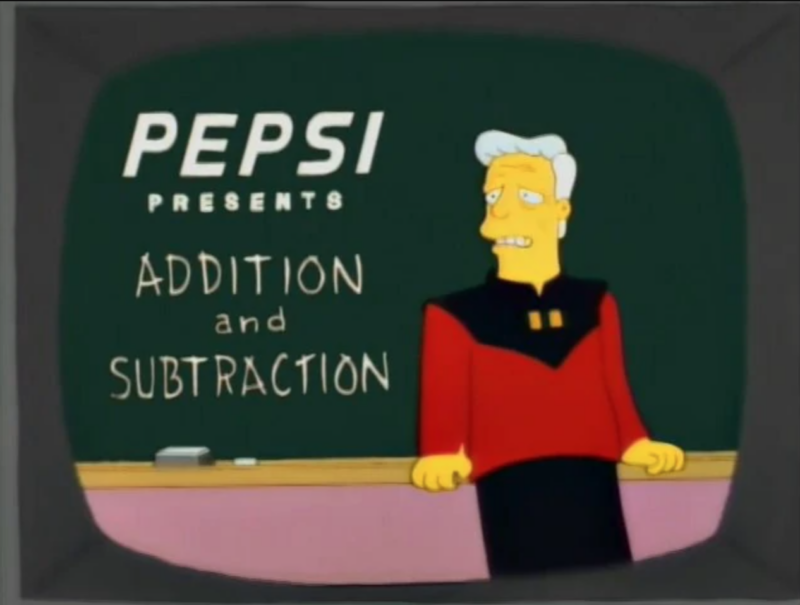
Blocking YouTube would be a disaster for Aussie kids
As laws to ban children under 16 from using social media are being hand-balled through the halls of parliament at record pace, it seems that alongside TikTok, Instagram, and Facebook, YouTube is now somehow in the firing line.
This is clearly nonsensical. YouTube is a video platform, like Netflix. It’s user-generated, sure, but so is Wikipedia. I’m about to make a number of arguments as to why banning Australian kids from either participating in or watching YouTube would be a disastrous move – but most simple of all is that, by definition, YouTube doesn’t classify as a social media platform.
But maybe it secretly is. Maybe the kids are somehow chatting via YouTube messages, or congregating in the comments section of various videos buried deep among the billions of mega-hours mega-uploaded each mega-year. YouTube might actually be used as a social media tool by the kids, like how Ozempic is meant to be for diabetes but is actually mostly being used as the punchline to comedy sketches.
Now, considering the only proof-of-age I’ve carried upon my person for years now is my crow’s feet and jaded disposition, I decided to call up one of these fabled ‘young people’ being discussed so heatedly in the media these days, and find out what they use YouTube for.
It turns out, it’s a very useful tool for pretty much everything – aside from socialising.
Leo Puglisi is a journalist and the founder of online news channel, 6 News Australia. He has interviewed three Prime Ministers during his career, and has this past week been quite vocal across a number of mainstream media channels about the government’s pending social media ban.
Another thing Leo did this week was turn 17, which makes him the ideal person to call up and ask about kids and YouTube and maybe find out if the kids give birthday punches in the form of emojis these days.
The first point he makes is that any form of social media ban will ultimately be bypassed.
“When you tell a young person, you tell a teenager not to do something, I think they’re more likely to do it, more likely to want to do it,” he tells me.
This is a point Albanese has already conceded, comparing it to a hypothetical teen buying booze this weekend.
In regards to YouTube, Puglisi predicts “a lot of significant impacts”, starting with education. He mentions something called ‘Google Classroom’ that reminds me of The Simpsons episode set in the future when school is sponsored by Pepsi. But, I digress.
“There’s always YouTube links posted by teachers,” he says of Google Classroom. “It was huge during remote learning as you can imagine, and that’s really important, so teachers aren’t, you know, completely overwhelmed.”
Bill Shorten suggested there will be allowances made for educational material, telling the AFR this week: “The 16-year-old proposition isn’t the be-all-and-end-all. There will be exemptions. There’ll be carve-outs. But what it does do is it starts to refocus the debate.”
This seems to be introducing an entirely new set of problems.
Who gets the keys to upload education content? Who is the gatekeeper? At what frequency is this policed? Under which guidelines? How are religious videos treated? What is educational, anyway? The Zapruder film, in which a seated President gets his head ripped apart by a bullet in front of an adoring, all-ages crowd – how can you not argue this is not an educational film? Does an 11-year-old get access to the same sex education material as a 15-year-old? Do we need tiers of age restrictions? It’s getting a bit hard now, isn’t it?
As for other video content? My 17-year-old friend doesn’t seem likely to hop on over to the antenna store should YouTube become banned.
“Look, I don’t think it’s going to suddenly make all young teenagers switch to watching free-to-air news, free-to-air sport. They’re just going to try and find ways around it,” Puglisi reasons.
“But it’s really concerning that it’s even been considered as one of the platforms. I think most people don’t really treat it as a social media platform, like in the same way Facebook and Twitter and Instagram are.
“It is essentially the television for young people at this point in a way.”
This is the troubling part. Banning YouTube can only act as a disadvantage for Australian children. It’s blocking the largest video and audio distribution system in the world. The biggest archival storage unit in the history of man. The largest source of educational, instructional, historical, entertaining videos in the world.
And let me double check – kids aren’t communicating at all through it, aside from maybe leaving comments under videos, which is basically whistling in the wind?
Puglisi says “unless you’ve got a year-long comment section thread going – you’re not texting each other via YouTube. People don’t treat it in the same way.”
He continues: “It is essentially a broadcast, you know? 6 News, as a streaming-only, digital-only news channel, when we talk about ‘follow us on social media’, we don’t talk about YouTube, we treat YouTube essentially like we’re on free-to-air television.”
In other words, as a video distribution system, with an audience measurement system for performance monitoring.
“It’s really not a social media network in the same way, and it’d be absurd to have it under this ban.”
Again, that should be where the argument ends.
There’s also the creative element of YouTube. The open forum it gives young, creative children to upload and catalogue and develop their own video and audio explorations. To post a video of their own talent, in a bid to begin building towards where they may one day wish to be. The popularity of TikTok has proven the desire for such creative channels, but TikTok deals in shorter, more ephemeral posts. If you ban young people from creating stuff and putting it on YouTube, you’re like killing the entire distribution hub for their creativity. You are limiting their horizons, at the risk of sounding like a Julie Andrews musical.
Let’s not forget Justin Bieber was discovered after posting a video of himself to YouTube. Imagine depriving the world of Bieber fever. Unthinkable.
Leo was 11 when he started 6 News in 2019 (seems weird to call an 11-year-old by his surname, hence the shift). For comparison’s sake, the kid who invented braille was 15. Jackson Browne wrote ‘These Days’ at 16. By then, Leo was running a fully-staffed newsroom and pumping out hourly bulletins – he didn’t have time to sit around strumming a guitar, and he certainly didn’t have time to sit through his HSC, do a three-year communications degree, a series of internships, then luck onto a long corporate ladder.
6 News wouldn’t have the reach, or have become the stomping ground for future mainstream careers that it has become, were it not for YouTube.
I’m talking to a living, breathing case study here!
“Exactly,” Puglisi agrees, “and a lot of my colleagues, and great people who were at 6 News, many of which have come to us when they were under 16 – I asked them, ‘Can I have an example of your work?’ And they’ve got YouTube channels where it’s all uploaded, all these other reports. We’ve been able to find them that way. I think that’s really, really significant.
“There are a number of 6 News reporters who have gone on to work for mainstream free-to-air channels, and a lot of that has just been because they’ve been able to be seen on 6 News.”
And by “seen on 6 News”, he, of course, means, “seen on YouTube”, where they are streaming live to 28,800 subscribers.
“Taking that away is, as you say, completely limiting creativity, limiting agency for a lot of young people,” Puglisi continues. “Look, we’re talking about teenagers. We’re talking about year 10 students. This isn’t saying, ‘let’s let all seven-year-olds upload whatever they want to YouTube,’ right?
“These are teenagers that are expected to act a lot more mature, and surely, I think that should be reflected in how the government treats us.”
I’m going to leave the argument there.
If you want more, the AFR delves into how lumping YouTube into the social media ban will impact those many, many entertainers of children who rely upon an underage audience for their livelihoods.
I’ve also sidestepped the fact that YouTube is also the world’s most utilised, cost-effective babysitter, and how overworked parents will simply log in on behalf on understimulated/overstimulated children and let them run wild, because ‘wild’ on YouTube is still pretty damn tame.
The most obvious point is, again, that banning YouTube is nonsensical, and only acts as a disadvantage to Australian children.
Besides, it’s not a social media platform. It actually makes more sense to ban kids from the telephone, or using Australia Post or a carrier pigeon – all three are closer in utility to Facebook than YouTube is.
Anyway, I’m off to make a YouTube video imploring the government to ban kids from using Etch-a-Sketch. You can say, see, and do anything on one of those things.
Enjoy your weekend.







I’m all for banning You-Tube. The amount of s**t on there overwhelms the good stuff. They need some way of screening the content properly before it should be allowed. What’s scary is that there is some really nasty content out there targeted little kids and disguised as innocent material – I’ve come across cute penguins that tell kids to run in front of cars, this weird video with a horrifying sun that comes up to scare kids. And the constant, constant advertising (adults playing with kids toys usually) is just so bad! I’m continually battling the algorithms, continually having to monitor. I rue the day introduced my daughter to You-Tube. Now she knows its existence every time she asks for it becomes another battle for this overtired mum.
As with any UGC (User-Generated Content) it’s up to the poster / owner of the channel to declare what the content is about, via the meta data, and the classification of the content. With over 500 hours upload every minute Globally, there’s never going to be a silver-bullet solution for advertisers, or the comments above where “children are being served constant advertising”.
YouTube is meant for Teens, or from at least 10+ – There’s an App called YT Kids which should cater for popping on Peppa, Ms Rachel or The Wiggles – all without advertising. Brand Suitability and Safety platforms do exist in the market, where you can almost guarantee the content you run against, but as with anything on the big ol’ web, if you seek it, you will find it.
The Government might want to spend a bit of time with 13-14yr olds and see the stuff they get up to – rather than trying to block the world’s biggest and most successful website…
They 100% do use it as social media – specifically YouTube Shorts. It’s scrollable and uses algorithms to serve content. With age put into YouTube to lock down content for my 9 year old boy he was still being served up videos of women undressing. It’s completely unlicensed. For my young teen girls who aren’t allowed social media apps, they scroll content just like TikTok as they can access easily via their browsers. It’s parents vs AI algorithms and we’ve lost.
It’s time to get government out of the business of parenting
Perhaps Leo Puglisi can post a video explaining what Social Media is for Nathan Jolly.
YouTube serves as a video-sharing site that allows users to create, upload, and share videos while fostering social interaction and community engagement. I.E. Social Media.
Netflix is completely different!
It’s time for Social Media platforms to take responsibility for the content they monetise, full stop. They need to be transparent and held to the same standards as domestic media. Until they behave responsibly their use amongst children should be limited – whilst they can be beneficial they do cause real and significant harm.
Be careful, children are easy to be lead away. Parents watch your what your children looking at on utube. Please!!!!!! ???????